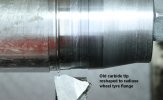Since the stainless steel rod arrived I've been messing around making new axles.
I continued work with the holder for the axle material. I had one false start...
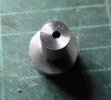
For the first attempt, I machined the mild steel body the approximate length of the axles - 30mm - then drilled through this to 1.9mm diameter to open it out to the 2mm diameter with a reamer. I've often read of drills wandering when boring, but it's the first time it has happened to me.

I had started this hole off with a 1.5mm drill and I suspect that this might have caused the problem.
So he new holder body, which I started in my previous message, would have short length brass inserts at each end to avoid wandering drills.
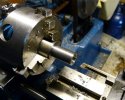
What is going to be the rear end was bored to accept the brass end plug, so no wandering now.
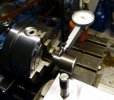
The holder was then reversed and set up in the four jaw to run true referencing the rear end just turned...
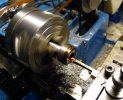
...and the front end was bored to take the front plug. The outside of the front was skimmed to make it true as well.
Two brass plugs were turned up to be push fits in the holder body.
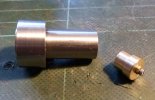
Here you can just about see the front plug which has been push fitted into the steel body - that needed my 4" Record vice in the outside workshop to do that - the small vice in my indoor workshop wouldn't look at it.

The brass plug for the rear has been drilled 2mm for the axle end and a small BA screw has been fitted to allow for an adjustable back stop. It hasn't been fitted to the body until the work on the front plug has been finished.
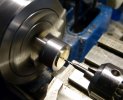
The hole in the front plug was started with a 1.5mm end mill to minimise any chance of wandering. It was then opened out to 1.9mm and a 2mm hand reamer was entered from the rear and the hole finished using the taper on the reamer to provide a tight-ish fit for the axle material.
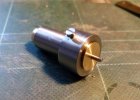
The finished axle holder with a bit of the stainless steel material in place. An 8BA clamp crew has been added to lock the material during turning.
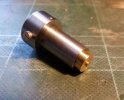
The rear plug has been press-fitted into the back of the body.
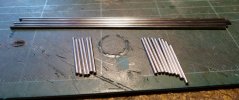
The axle material - 2mm stainless steel rod from Amazon. It's actually 1.98mm diameter, sold to use as axles on small electric cars, so probably running clearance in a 2mm bearing. It was sawn into ~31mm lengths to turn down to the 30mm axle length.
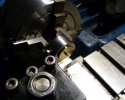
The tool in action, in this case cutting the 1mm diameter journal after the axle had been turned down to 30mm length.
I am aware that the setup will inherently have some run-out - i.e. the clamping screw will tend to hold the axle off centre with the small amount of clearance around the axle which will occur with use. But it could be limited to about 0.001" TIR.
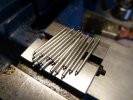
The finished axles, and it was a bit of a fight. The stainless steel was not easy to turn and I had a bit of a fight to get reasonable results from it. In fact it blunted the first tool I used which had been sharpened just before I started on the batch and I used another sharpened tool with a different top rake to see if I got better results.
I made up sets of wheels on axles using this batch of axles and I got about 90% within my 0.003" TIR limit. I've also worked out a dodge to improve out of tolerance wheels. On the assumption that the runout could be both on the axle journal and the wheel axle hole, I turn the wheel on the axle by 90 degrees or 180 degrees and on most occasions the TIR is improved to within limits.

But I've had my fill of wheels on axles at the moment.

I've got enough made up sets to use in over twenty wagons so that should be enough for a while.

But I've located a source of plated mild steel rod and I've got some coming from China which should be here at the start of May. So I will probably have another go to see if the mild steel turns better. I'm also looking at cutting the seat for the wheel at 1.9mm diameter on the axle end at the same time as I'm cutting the 1mm diameter journal, so they will be concentric, so the only source of runout should be in the bore of the wheel.
Jim.


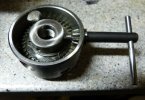
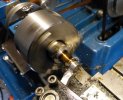
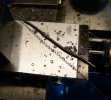
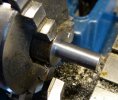

 carbide tooling - or adapt from the now considered to be old-fashioned brazed tools.
carbide tooling - or adapt from the now considered to be old-fashioned brazed tools. 